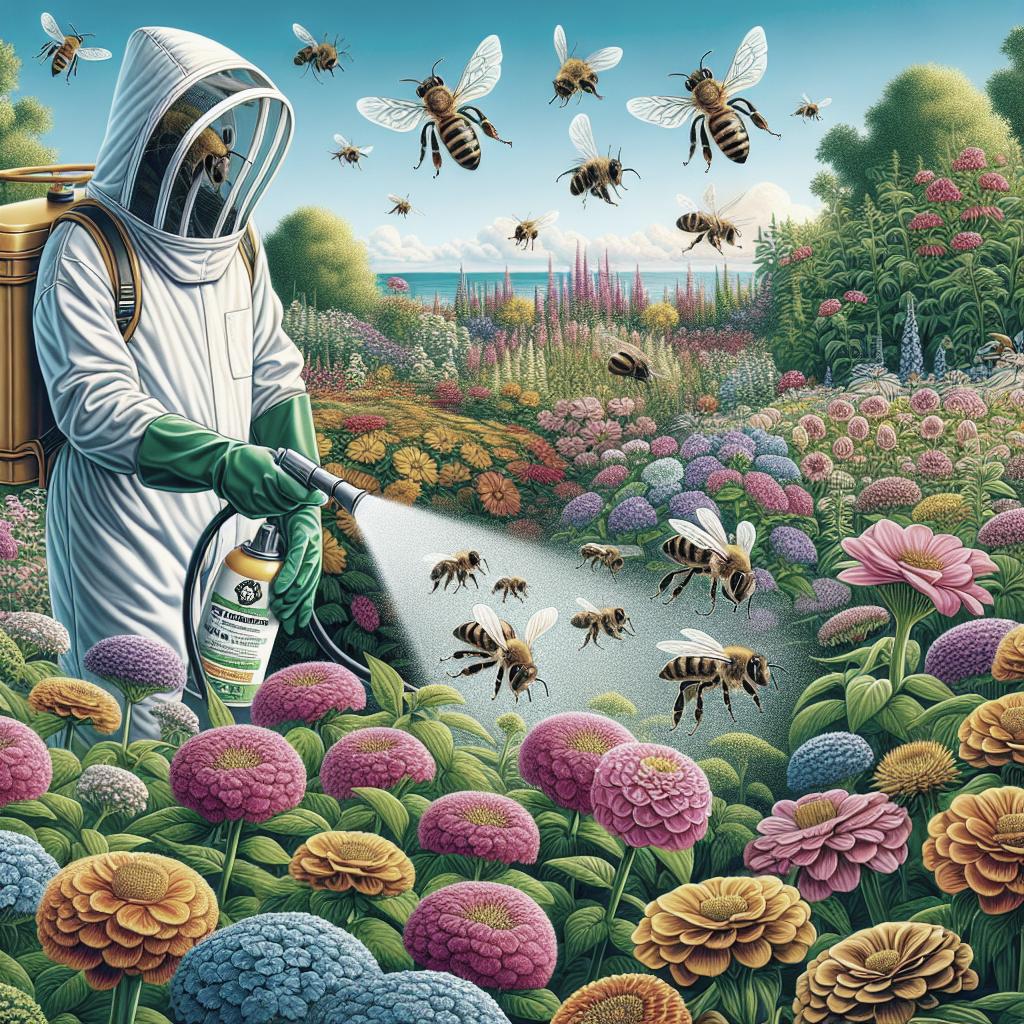How to Protect Bees from Pesticides
Bees are vital to our ecosystems and food production, yet they face significant threats from pesticide exposure. This article explores strategies for mitigating these risks and preserving bee populations. We’ll explore Best Management Practices (BMPs) which help farmers and gardeners reduce pesticide harm. We’ll also look into Managed Pollinator Protection Plans (MP3s) that provide community-wide approaches. Additionally, learn about Pesticide Mitigation Measures that can be implemented to safeguard bees. Finally, discover how the EPA collaborates with tribal communities to foster pollinator health. By understanding and applying these strategies, you can ensure a safer environment for our buzzing friends.
Best Management Practices (BMPs)
Best Management Practices (BMPs) are sets of guidelines aimed at reducing the impact of pesticides on bee populations. They include practices like selecting low-toxicity pesticides and applying them when bees are less active. Farmers and gardeners can significantly minimize exposure by choosing products labeled as bee-friendly, which are designed to control pests while posing minimal risks to pollinators.
Timing is an essential aspect of BMPs. Applying pesticides early in the morning or late in the evening, when bees are least active, can help mitigate harm. Furthermore, accurate identification of pest issues and targeted application areas are crucial. By focusing only on affected areas, BMPs not only preserve beneficial insects but also reduce unnecessary chemical usage.
Integrated Pest Management (IPM) techniques can further enhance BMPs. Integrating biological controls such as beneficial insects and promoting crop rotations can help maintain a natural balance in ecosystems. Education and continuous training about BMPs can empower communities to adopt such practices effectively, ensuring environmental harmony and bee protection.
Managed Pollinator Protection Plans (MP3s)
Managed Pollinator Protection Plans (MP3s) are comprehensive frameworks designed to protect pollinator health through collaboration and communication among stakeholders including farmers, pesticide applicators, and conservationists. Implementing MP3s involves assessing local pollinator populations and identifying potential risks. States often customize these plans to address region-specific challenges and ensure participation from various sectors.
Key components of MP3s include communication protocols, where pesticide applicators alert beekeepers ahead of pesticide applications, allowing them to take preventive measures. By developing guidelines for establishing pollinator habitats and creating awareness campaigns, MP3s cultivate a community-wide commitment to pollinator health. The involvement of governmental and non-governmental organizations in MP3s ensures a holistic approach to managing pollinator safety.
Continuous monitoring and periodic reviews are vital to MP3s’ success. Feedback from stakeholders aids in refining these plans, ensuring they remain effective amidst changing environmental conditions. MP3s serve as a collaborative model, uniting communities with a common goal of sustaining healthy pollinator populations.
Pesticide Mitigation Measures to Protect Pollinators
Pesticide mitigation measures focus on altering how pesticides are used to minimize their impact on pollinators. One effective measure is the enforcement of stricter regulations regarding pesticide labeling, ensuring that products carry clear and precise warnings about bee toxicity. Educating users on reading labels correctly can greatly reduce accidental pollinator exposure.
Another measure includes the adoption of buffer zones, which are areas adjacent to bee habitats where pesticide application is restricted. These zones act as protective barriers, reducing the risk of pesticides drifting into areas frequented by bees. Collaborating with local stakeholders in the placement and enforcement of these zones can optimize their effectiveness.
The innovation of new pesticide formulations is also a significant mitigation strategy. Research and development in producing less toxic, target-specific pesticides help minimize harm to non-target species like bees. Supporting these advancements through funding and policies can drive continual improvements in safeguarding pollinators.
EPA Collaborations with Tribes
The Environmental Protection Agency (EPA) recognizes the importance of including tribal communities in efforts to protect bees. These collaborations focus on leveraging traditional knowledge and practices to complement scientific approaches in pollinator protection. Tribes often possess extensive understanding of local ecosystems, which is crucial in developing tailor-fitted strategies for bee conservation.
Through mutual partnerships, the EPA and tribes engage in joint research projects aimed at reducing pesticide risks. These efforts include monitoring pollinator populations and assessing pesticide impacts in tribal areas. Such collaborations help ensure that protection measures are culturally sensitive and respect tribal sovereignty.
Training and educational initiatives are integral to these collaborations. By providing resources and support, the EPA empowers tribal communities to participate actively in conservation efforts. These alliances not only fortify pollinator protection but also celebrate the stewardship of indigenous communities in preserving biodiversity.
Final Thoughts
| Strategies | Description |
|---|---|
| Best Management Practices (BMPs) | Guidelines to reduce pesticide impact on bees, including low-toxicity products and timing applications. |
| Managed Pollinator Protection Plans (MP3s) | Community-based frameworks encouraging collaboration and communication to safeguard bee health. |
| Pesticide Mitigation Measures | Regulations and strategies focusing on minimizing harmful pesticide effects on pollinators. |
| EPA Collaborations with Tribes | Partnerships leveraging traditional knowledge to enhance pollinator protection efforts. |


